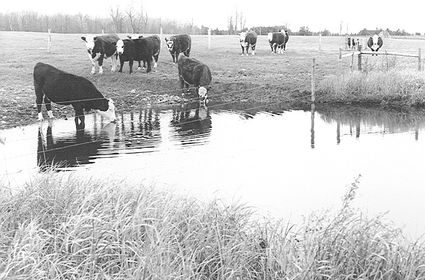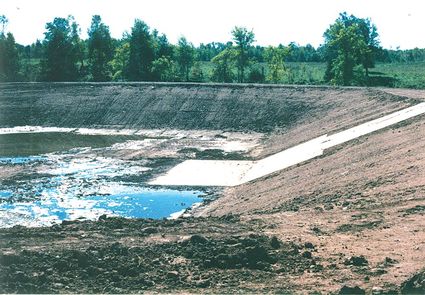Closing a manure pit is a big job
WATER QUALITY & AGRICULTURE, Part 2
April 5, 2019
Last week, the Carlton Soil and Water Conservation District brought you Part 1 of a story on water quality and agriculture, which highlighted the ways farmers can make an impact - positively or negatively - on local water quality through the choices they make in raising cattle.
This week, we'll concentrate on the use of manure pits and how to properly handle abandoning them when they are no longer needed.
Most farmers who have feedlots or barnyards have had manure pits constructed. These are ideal for storing manure, which is considered hazardous waste until it can be safely applied to pasture or cropland. However, just like anything else, a manure pit can reach the end of its design life or may not be needed anymore if a farmer stops raising cattle or the property is sold. The Minnesota Pollution Control Agency requires that within one year of ceasing operations, farmers must remove all manure in the pit, apply it to land at agronomic rates, and fill in the pit with dirt.
Abandoned manure pits are dangerous and can be death traps to people, especially children and animals, as they are filled with hazardous materials and rain/snow water. They are also a liability for current and future landowners. Closing an abandoned manure pit is a big job which, if done incorrectly, can have devastating impacts on nearby water sources.
When permanently closing an abandoned manure pit, careful consideration should be given to protecting the surface and groundwater, and preventing the release of potential gases such as hydrogen sulfide.
The agriculture professionals at Carlton SWCD and the United States Department of Agriculture Natural Resources Conservation Service are available to help farmers with the huge undertaking of dealing with abandoned manure pits. They can provide financial and technical assistance to farmers and landowners: They will inspect the site, check original designs on file, create a closure design, and calculate quantities and cost estimates. They will also walk the farmers through all of the paperwork and regulations, and help them find financial assistance from NRCS and the Minnesota Department of Agriculture to help fund the cost of the closure.
In addition, the SWCD and NRCS will help farmers and landowners ensure that the abandoned manure pit closure complies with all federal, state and local laws and regulations, including the national pollution discharge elimination system requirements. Each project is also assessed for its impact on impaired waters and threatened and endangered species, as well as its goals of protecting surface waters from runoff and ground waters from leaching.
Local farmers who want to explore any of these options are encouraged to contact the Carlton SWCD or NRCS for technical help and information. In many cases, financial assistance to implement changes is also available. NRCS and SWCD are voluntary, not regulatory, organizations. Farmers have to request help from them.
Kim Samuelson is Carlton SWCD's elected supervisor for District 4. For more information about the BMPs and regulations concerning farming operations, contact Carlton SWCD staff at 218-384-3891. You can also find more information about Carlton SWCD on Facebook or on their website at http://www.carltonswcd.org.



